Toutes les informations dont vous avez besoin, en un coup d'œil !
Nos articles et autres rapports, sont détaillés et bien documentés. Ils permettent de prendre le pouls des évolutions du marché et de garder une longueur d'avance.
Inscrivez-vous à notre newsletter afin de recevoir toutes nos informations exclusives et ne jamais manquer un article.

If Movemeon co-founder Richard Rosser’s recent poll is anything to go by, plenty of our LinkedIn network has already started using generative AI.
Following the poll, Rich sat down with AI expert Adam Cox to discuss the implications of the technology. Off the back of that call, we’ve put together this mini playbook on how strategists can use the technology.
If you prefer to see the whole discussion in video format, click below to watch it.
https://www.youtube.com/watch?v=Vmq9zp2AHR8
Follow our Youtube channel to make sure you don't miss any exciting interviews with leaders and to get the most exciting industry insights.
The end of management consulting?
Depending on who you speak to, generative AI either “spells the end of management consulting as we know it,” or is a total game-changer.
Just like AI, we can’t predict the future. It’s impossible to say whether the alarmists are correct, or whether future generations will look back on the current era in the same way we now view, say, the rise of the computer, the electronic calculator, or the Jacquard loom, which so terrified and incensed the original Luddites.
We can, however, offer insight into how strategists that want to adopt this technology might be able to benefit from it. With the help of Adam Cox, AI expert and Chief Strategy Officer of cybersecurity firm Reflare, that’s exactly what we’ve set out to do.
Explore your career through Movemeon by finding your next opportunity on our platform!
The strategist’s AI playbook
Uptake
Movemeon co-founder Richard Rosser recently conducted a poll on LinkedIn asking his network, most of whom work in fields related to strategy consulting, the extent to which they are currently using generative AI. 28% of respondents said they currently use it regularly; 42% replied that they were just starting to use it; 19% said that they hadn’t yet but that it was on their to do list; while 10% said they hadn’t used it, and didn’t intend to.
Most strategists are already using AI in some form, and that the overwhelming majority intend to. How are they going about it?
Automate the mundane
Cox sees “strategy with a small ‘S’” as the main use to which AI is currently being deployed. This entails mundane tasks like “generic research, building out the paragraphs that are in an executive pre-reads before strategy away days, [and generating] filler content” for decks and presentations.”
Inspire the big picture
There are also use cases for strategy “with a big ‘S.’” These, say Cox, involve sparking ideation, through the use of query statements to explore the ramifications of different hypothetical scenarios.
“It’s producing a full whiteboard for everyone in the team to sit around and then riff off,” says Cox. Along with scenario planning, this is the main type of task that Ai is currently assisting.
Drive deeper insights
However, strategists may barely be scratching the surface of what generative AI is capable of, even in its current, early form. Yuval Atsmon, a senior partner leading the McKinsey Center for Strategy Innovation, told McKinsey’s Inside the Strategy Room podcast that he believes executives are “missing opportunities to use AI in the building blocks of strategy.”
As well as simple analytics, this could include diagnostic interpretation of business metrics to understand root causes, and even predictive intelligence to anticipate future events – though Atsmon cautions that predictive AI is “difficult” and “risky.”
Challenge the trend
It could also, Atsmon suggests, be used to challenge decision-making biases. He suggests an example scenario where all participants in a strategy session agree unquestioningly with the CEO’s suggestion.
“AI could inform the room, ‘We might have a sunflower bias here,’ which could trigger more conversation and remind the CEO that it’s in their own interest to encourage some devil’s advocacy.”
Read more interviews with leaders, industry insights and success stories on the Movemeon blog.
Augment your skill set
Cox feels that the ultimate winners from AI will be those individuals who incorporate a solid knowledge of the technology into a versatile skill set to become a high value-add employee.
“You need to know the difference between being a good employee and a great employee,” he said. “I believe this is one of the main components that will separate the winners from the losers.”
Know the limits
AI is currently limited. Cox is at pains to stress throughout our chat that wise strategists don’t lift its output wholesale, and that they instead use it as a starting point to generate content they then refine themselves.
Similarly, as Atsmon points out, it shouldn’t be relied on to predict the future, or to generate strategies in full.
Beyond the limitations of the technology, there could be a case for businesses to moderate their adoption of AI for the sake of optics. While using AI to drive transformative business efficiencies may look great to institutional investors, the displacement of white collar jobs could turn middle class customers against companies known to be pursuing it aggressively.
Cox compares this effect to what groups like Extinction Rebellion have done to energy companies. “It’s the same sort of thing. [People will think] ‘DoI really want to deal with that company [if they’re using AI]?’”
Even without conscious boycotting, en masse displacement could restrict the cohort’s spending power.
This is a moment
Regardless, the technology has reached an inflection point which makes it impossible to ignore.
“Those who aren’t taking this seriously, it’s at their own peril,” said Cox. “This is a moment, mark my words.”
About the author: Dan McEvoy is a freelance writer and editor, with extensive experience in finance, technology, HR, recruitment, and marketing content.
For more exciting insights about careers after consulting, how to get the most out of consulting, how to hire current or former consultants and a lot more, join 33,000+ following Movemeon co-founder Rich on LinkedIn.
Looking to build a strategy team that’s ready to embrace AI? Contact Movemeon to find the right consultants to drive your business forward.
Are you a candidate? Register here.
[hubspot portal="25392842" id="24161966-77f0-499d-9230-0f71cee62bf7" type="form"]

Bootstrapping has always been a popular route to growing a start-up. It enables founders to retain control not only of their business’s equity, but also its strategic direction. It can be a winning approach; many large companies, including GoPro and Mailchimp, became huge successes without external funding.
Following a decade of record-low interest rates, the world economy is now far less friendly to business owners seeking capital injections into fledgling businesses. According to Crunchbase, global VC investing fell 35% in 2022.
This doesn’t mean that start-ups are doomed to fail, though. By implementing the approaches set out here, start-up founders can set their businesses up for growth and success, without relying on external investment.
The Strategies for Success
Shake every tree
Bootstrapping hinges, first and foremost, on how much money you can supply up front yourself. However streamlined your strategy, and however lean the efficiencies you create, more starter capital will increase the length of time your start-up can survive before it generates a profit.
Many founders sell assets such as cars or property in order to inject cash into their business. Family, friends, and crowdfunders can also be non-VC sources of seed funding. You can also explore grants or loans as sources of capital. For UK-based start-ups, there are a range of funding schemes available to businesses based on their geographic location and industry.
Pursue a clear GTM strategy
Typically, successful start-ups are characterised by a clear focus on bringing their business to a point where it offers value to customers as quickly and efficiently as possible. This requires a go-to-market (GTM) strategy to act as a roadmap.
There is no single approach to creating a GTM strategy, but most contain these core elements:
- The market need. This is the fundamental problem that your product or service sets out to solve. Dropbox, for example, was conceived when its founder forgot his USB memory stick before a four-hour bus journey he’d intended to spend working. Identifying the need or gap in the market your business addresses is paramount to success.
- The target audience. Closely related to the market need is a clear idea of who is likely to feel it; these are the people or businesses most likely to buy your offering. Building a comprehensive customer persona will inform your marketing and pricing strategy.
- Competitor analysis. In short, this means an assessment of supply and demand to ensure that no-one else has already come up with your unique idea (or a better one) to solve the problem.
Pricing and distribution. Informed by all the above, your GTM strategy will include a clear plan for how to price and sell your product. For example, will you operate an e-commerce model of selling through a website, or an inbound sales model?
Minimise spending
Build your offering with the minimum inputs possible. Approach the process with a hyper-protective mindset towards your pile of starter capital. If possible, aim for negative cash-conversion; only spend money you’ve already been paid.
Keep hiring limited to the must-have positions in the early days. It’s a cliché, but start-up founders can protect their limited resources by getting their hands dirty in all areas of the business. A small, versatile team also reduces your office and equipment costs.
Getting those key early hires right can, however, greatly improve your chances of success. Having an experienced, versatile strategist in place as Chief of Staff can free up your executive team’s bandwidth while optimising the business strategy and ensuring it is on track.
Market cost-effectively
Without existing brand awareness, marketing needs to be a top priority in order to start selling your offering. The challenge lies in developing a marketing strategy that conserves resources for spending on the product or service itself. If your offering is the best it can be, there are various means by which you can raise awareness of it for free, or close to.
Make word of mouth your number one acquisition channel as early as possible. You may need to deploy a few carefully targeted ads to get this ball in motion, but keep this to an absolute minimum, and avoid altogether if you can.
You can also piggy-back on the reputations of more established brands using partnership marketing strategies such as cross-promotions, referrals, or product placement.
Leveraging your own network to its fullest extent is another invaluable source of leads. Whatever industry your start-up operates in, ensure you are regularly attending meetups and events to establish yourself within the community and identify possible customers early on.
Get in touch with Movemeon
If you’re ready to start growing your team, or you need that perfect Chief of Staff to help you get there, speak to Movemeon now to explore how we can support your growth.
[hubspot portal="25392842" id="24161966-77f0-499d-9230-0f71cee62bf7" type="form"]
About the author: Dan McEvoy is a freelance writer and editor, with extensive experience in finance, technology, HR, recruitment, and marketing content.

Srećko worked as a consultant at McKinsey for several years before founding his own company. With Movemeon he talks about this experience and also gives valuable tips from a venture partner's perspective, for consultants who are also thinking about starting their own company.
You have been a Consultant yourself and left McKinsey in 2019. What skill that you learned in consulting have you found most powerful outside consulting?
It’s funny because it’s one I didn’t realise during my consulting days. It is what I call “blissful ignorance”: the idea that you can go into a meeting knowing 0 about a specific topic but by asking the right questions and structuring the problem get to the gist. Obviously, you need the brainpower, but for me it's more the confidence in one’s abilities than it is about problem solving per se.
What's your top tip for people considering leaving consulting and what do they most need to be aware of?
It’s being wary of what kind of colleagues give you energy. Consulting is very different from other jobs in that regard. You don’t need to manage people who are insanely motivated and keep pushing all the time - you guide them. However, 70% of work in other jobs is actually not only leading, but also motivating others. I have met many who got into leadership positions and then realized: Hey, I actually don’t enjoy this. They rather enjoy small, intimate settings that focus on outputs, not people management.
"...when I returned my key card, I remember feeling like somebody ripped out a part of my soul. But 2 days later I just realised - nothing has changed."
What's the biggest shock / surprise on leaving consulting?
The realisation that my life keeps on, and that all my friends are still there. Consulting is such a big part of one’s life that it almost becomes a part of your identity. It sounds stupid, but when I returned my key card, I remember feeling like somebody ripped out a part of my soul. But 2 days later I just realised - nothing has changed. And many new doors have opened for me.
You now work in the Venture space and have a lot of interactions with founders. How many of those would you say have a Consulting background?
Certainly a high number. Many of the best founders I have interacted with are former consultants, but it’s often those who experienced failure, or who worked for a start-up after consulting life, who turn to become amazing entrepreneurs. I usually recommend most people to join a venture before they found their own. Trust me, life will get a lot easier.
Find your next opportunity on Movemeon! Register for free and within only two minutes to view all live roles.
Why do you think so many consultants become founders? What consulting skills do you think are helping them?
Part of the reason is that people who go into consulting in the first place are often overachievers and strive for change. They then get into this big machine that teaches them many things, like problem solving, top-down communication, execution, and project management. In the end, you often get to someone who is a commercial allrounder with the right mindset and work ethic, something that is much needed in founding teams.
Can you think of any habits from consulting that might be a blocker in the start-up world?
Consultants are paid to find mistakes. It takes a big mindset shift to get past this habit of always overanalyzing, always finding flaws, always thinking why it cannot work - but instead focusing on why it can work, and just starting to do it. It is actually really tough to master “conviction” - to see the risks and drawbacks, but still have faith and pursue it even if the odds are against you. In some way, you can be too smart for your own good.
"Don’t start like a consultant would: by creating a long list of alternatives you weigh. Instead, start with what you are good at or passionate about and zoom in here."
What tips would you give a current consultant looking to found their own business?
Don’t start like a consultant would: by creating a long list of alternatives you weigh. Instead, start with what you are good at or passionate about and zoom in here. Talk to others, especially customers, about this. Whatever that is, there are many things to be build. Find complementary people when it comes to skills and character. And then just take the leap of faith. Remember, most people never pick up the phone, and most people never get started.
Are you a candidate? Login or join Movemeon for free and get access to all opportunities!
Whether you are ready to hire through Movemeon or just looking for more information about hiring, one of our team of friendly specialists will get in touch within 24hrs.
[hubspot portal="25392842" id="24161966-77f0-499d-9230-0f71cee62bf7" type="form"]
Find out how other Movemeon candidates experienced and managed the change from consulting to industry in further interviews we published on our blog.

Mauricio only recently moved to Australia, he originally hails from Mexico and found his new opportunity on the Movemeon platform. Our team in APAC connected him with our client Axlewood Analytics where he started his new role as a Senior Strategy Consultant as part of the sustainability practice.
It's a great example of where Movemeon helped an overseas candidate to get their foot in the door in the Australian market.
Please tell us a little about your career so far. How did you find the move to Australia and finding a new role here? Any advice for other overseas candidates looking to make the move?
I've been in the strategy and consulting business for around 8 years now and I was always looking for a chance to move my career to Australia. In the beginning, looking for this change was a huge task but honestly, Movemeon helped me to tackle that fairly easy and I always had a reliable contact person throughout the entire process.
As for advice, I think what helped me was getting in touch with the Movemeon team, as good connections, expertise and professionalism are very helpful.
What excites you about the new opportunity as Senior Strategy Consultant at Axlewood Analytics?
It's a great challenge, it's helping to create this new sustainability and analytics consulting firm so it's very exciting and also it is clearly aligned with my idea of redirecting my career towards sustainability.
Axlewood Analytics is a management consulting firm for the Sustainability age. Axlewood provides Strategy and Transformation advisory in various areas of Sustainability such as Biodiversity, Circular economy, Decarbonization, Energy Transition and ESG. The business is part of 100 person CPM Group which is an independently-owned advisory and project management consultancy delivering value across the entire project lifecycle to governments, asset-owners and project owners in the infrastructure and building sectors.
Click here to view current opportunities at Axlewood on Movemeon!
How did you come across the role with Axlewood and what made you apply for it?
Melinda from the team in APAC reached me and gave me some info about the role, and the idea appealed to me very fast, so I quickly and easily applied through Movemeon.
In your opinion, how does Movemeon differ from other platforms/ agencies/ channels?
I hadn't really tried other agencies because I think they tend to be not so human but the contact with Movemeon was great! The team answered super fast and encouraged me through the application process.
Are you a candidate? Join Movemeon for free and get access to all opportunities!
Whether you are ready to hire through Movemeon or just looking for more information about hiring, one of our team of friendly specialists will get in touch within 24hrs.
[hubspot portal="25392842" id="24161966-77f0-499d-9230-0f71cee62bf7" type="form"]
Find out how other Movemeon candidates experienced and managed the change from consulting to industry in further interviews we published on our blog.

Last time, we discussed the first of three principles that I’ve found to be essential for building a high-performing team. In this article, we’ll cover principle #2.
1. Attract and hire the right people, then set them up for success.
2. Cultivate an inspiring culture that maximizes individual and team performance.
3. Demonstrate servant leadership daily.
Principle #2. Cultivate an inspiring culture that maximizes individual and team performance.
Establish a WHY and a HOW early on.
Simon Sinek has a simple but profound model for inspirational leadership which he calls the Golden Circle and which he details in his Ted Talk. When applied to my new team, I saw the “Why” as our vision and reason for being, the “How” as our team values (the way we would conduct ourselves), and the “What” as our projects and initiatives.
Once my key leaders were hired, I flew them out to division headquarters for several days for our first team meeting. Besides inviting my manager, our division President, and other leaders and collaborators to speak, I also scheduled time for us to brainstorm our Vision and Values. The facilitation deck included questions such as:
- What problems are you passionate about solving?
- What are your superpowers?
- How is what you’re doing making you better?
- List three specific contributions our team will make to the broader organization.
- List why those contributions are important to our stakeholders.
- How will others’ lives be different after they have interacted with our team?
The brainstorming process allowed us to get to know each other, as professionals and as people. We also discussed and debated the critical needs of the organization and how we could most effectively meet those needs. Sometimes, the dialogue became quite passionate as different perspectives emerged, but this was exactly the point. The Vision and Values statement that resulted from these conversations became our north star and served us numerous times when key decisions had to be made or when the going was hard. It gave us strategic intent, an identity we were proud of, and formed the foundation of our team culture.
Lean into the strengths of every team member while creating synergies.
I’m a believer that all of us can do more than what our titles indicate and that we each have untapped potential. Cultivating a culture of diversity, inclusion, and belonging requires embracing the unique strengths and potential that every member of the team brings and creating opportunities for them to grow and shine. For example, my team included leaders with titles like Director and Manager, but also Executive Assistant. In the case of the latter, instead of asking my executive assistant to focus exclusively on administrative responsibilities, I invited her to contribute in material ways to our team’s key initiatives. Of course, she demonstrated both the interest in and ability to do so. Early on, I informally retitled her to “Team Ninja / SWAT Lead” on our team’s presentation materials. It was a playful gesture but also an intentional signal to her and to others of her role and value on the team. We subsequently discussed her career trajectory and possible next roles based on her interests and strengths.
Cultivating an inclusive culture also means respecting the individual expertise of team members. My team was unique in that we had functional areas not typically found within the same organization and I was not a deep subject matter expert in these areas. Therefore, my role as a leader was often to ask insightful questions, provide the right guidance and guardrails, remove barriers, and champion the team while leaving the details to the experts.
Additionally, because I had a bigger picture lens on the business, I identified opportunities for collaboration within the team so that despite seemingly disparate swim lanes, the cross-pollination made the efforts of each team member stronger than they otherwise would have been. As a result, my team felt valued, supported, and connected. A point of pride that we all share is how frequently colleagues across the company commented on the outsize impact of our team compared to our relatively small headcount.
Provide coaching and feedback with care and intentionality. Address issues quickly and fairly.
As leaders, we will all confront situations that require immediate feedback and course correction. For example, if a critical project was off-track or repeated conflict within the team was hindering morale and productivity, I have stepped in to provide redirection. These are delicate moments and I certainly have had my share of stumbles. However, by taking a caring and respectful approach that seeks to accurately understand the situation, assumes positive intent, and then provides direction so every member of the team be more successful, I’ve found that these challenging moments can become growth opportunities for the team – both individually and collectively.
Most of the time, however, we are not dealing with crises but helping our teams to perform at a higher level in their day-to-day which requires that we operate as coaches. I’ve grown significantly in this skillset over the past two years. Many leaders’ natural inclination, my own included, is to give advice based on our own experience or problem-solve when our team comes to us for help. But what I’ve found to be much more effective is taking an “inside out” approach that empowers team members by asking them to clarify what they’re trying to achieve, articulate the challenges they’re confronting, brainstorm their own solutions, and then own the path forward. A model I recommend is called GROW Coaching based on the expertise of Alan Fine, which I was introduced to by the leaders on my own team who are phenomenal coaches in their own right.
Summary
A high performing team is one in which team members are motivated to go the extra mile and where the whole is greater than the sum of the parts. This is only possible when there is an inspiring and healthy culture in place. Establishing a clear vision and values, maximizing on the potential of the team as individuals and as a unit, and creating a strong cadence of coaching and feedback are some key steps we can take as leaders to create a winning culture where those we lead consistently exceed expectations and deliver extraordinary impact.
Next time, we’ll discuss how demonstrating servant leadership daily is another critical factor in building a high performing team.
Author: Li Kehl
Whether you are ready to hire through Movemeon or just looking for more information about hiring, one of our team of friendly specialists will get in touch within 24hrs.
Are you a candidate? Join Movemeon for free.
[hubspot portal="25392842" id="519fa7a4-9f5d-4fc1-9cce-40d189b9a881" type="form"]

In previous posts, we discussed the first and second of three principles that I’ve found to be essential for building a high-performing team. This time, we’ll cover the last one.
1. Attract and hire the right people, then set them up for success.
2. Cultivate an inspiring culture that maximizes individual and team performance.
3. Demonstrate servant leadership daily.
Principle #3. Demonstrate servant leadership daily.
A famous incident in the Gospel of Mark involves two brothers, James and John, who ask Jesus for positions of power in God’s kingdom. In response, Jesus tells his team of twelve, including the two brothers, “Whoever wants to be a leader among you must be your servant and whoever wants to be first must become last.”
A leader who wants to build and sustain a high-performing team must put the team first. In practice, this can manifest in a myriad of ways. I will highlight a few from my experience.
Whether you are ready to hire, looking for more information about hiring or just want some advice, one of our team of friendly specialists will get in touch within 24hrs. Click here to contact us!
Help the team to shine.
I once had a great manager who gave me high visibility projects that put my strengths on display, even when they were areas of weakness for himself. He was not afraid of being outshined by me because he was confident in his own strengths, and he wanted the best for my career. Knowing this made me even more invested in doing great work for him.
As a leader, I have taken a similar approach. When a team member was invited to facilitate a discussion at our EVP’s staff meeting with her division Presidents (a big deal!), I helped him cut through the complexity of the topic to distill the overarching thrust and connect his key messages to larger themes in the organization. The discussion was a fruitful one and his star has since risen in the organization. In other instances when my direct reports have had major presentations to senior management, I have scheduled multiple dry runs so that when they did take center stage, they spoke with passion, confidence, and clarity. After one such occasion, a senior executive told me that my team member’s presentation was the most engaging during a multi-hour meeting.
Leaders foster not only high performance but also loyalty when we invest energy behind the scenes to help our people do their best work and get recognized for it. And when it is time for our team members to move on to bigger roles (because great leaders create more leaders), they will make the transition a smooth one. Because when we’ve got our team’s back, they will have ours too.
Be human.
Life is short. Those of us who work outside the home often spend more time with our colleagues than our families. As leaders, we can create environments where work relationships are transactional, or we can create more meaningful ones where our people feel a sense of connection and belonging. I choose the latter.
Below are some tactics that have worked for me:
- Respect that work isn’t and shouldn’t be our employees’ highest priority. This may seem counterproductive in an article about high-performing teams but here’s why it’s not. When leaders have hired the right people and set them up for success (article 1) and cultivated an inspiring culture (article 2), then recognizing what matters to our employees outside of work will only strengthen their commitment and performance. My team knows that health and family always come first. If there is an issue on either front, they know they can share openly with me, and I’ll work with the rest of the team to provide cover while they’re out. In one business book, the author writes that “you can’t create value at work when you’re destroying value at home.” If we want our employees
to create superior value at work, then we must support them in creating value in the rest of their lives.
- Model vulnerability. Performing at a high level requires leveraging strengths but also improving critical weaknesses that could undermine success. We can improve much faster if we share our goals with our manager and others on the team so they can help us. However, acknowledging weaknesses and seeking help are difficult to do unless the leader creates a psychologically safe environment. I have found that by being transparent about the things I’m working to improve (e.g., constructive feedback I’ve received, my leadership assessment scores), my team feels at greater liberty to do the same.
- Have fun and laugh frequently. Whether through surprise birthday celebrations over Zoom, quarterly team-building activities, or random injections of fun during all-hands meetings, my team has benefited so much from laughing together. Not too long after joining, a new employee sent me the following message: “GCE feels more like a family than a department. That is a direct testament to the culture you have put into place. I feel very lucky to be in your org.” You can bet your bottom dollar that a team of people who feel lucky to be there will outperform a team that doesn’t.
Go to bat for the team.
Finally, I want to highlight that as servant leaders, there are times when we must fight for our teams. This can mean making a business case for additional funding so that our teams can deliver the level of impact required by the business, even when the financial climate is challenging. Or thoughtfully explaining a team member’s chosen approach to an influential colleague who disagrees but isn’t the subject matter expert on the topic at hand. A servant leader must always take a collaborative and positive approach within larger organizational dynamics. But she must also protect her team’s focus and morale, without which exceptional results are not possible.
Summary
Servant-leadership is a critical ingredient to building and sustaining high performing teams. It can take a variety of forms, whether putting in the elbow grease to help our teams shine, creating an environment where they feel fully seen, or going to bat for them in the right way at the right time. This approach takes courage, confidence, and strength because there are sacrifices that must be made along the way. But does servant leadership create results we can be proud of? And is it worth it? YES and YES.
Thank you for reading this series on How to Build a High-Performing Team. If you’d like to continue the conversation, please find me on LinkedIn.
Author: Li Kehl
Interested in consulting-related insights and trends in addition to the exciting jobs on Movemeon?
Join over 32,000 people already following Movemeon co-founder Rich Rosser on LinkedIn for more insights about careers, how to get the most out of consulting and how to hire current or former consultants.

Mauricio only recently moved to Australia, he originally hails from Mexico and found his new opportunity on the Movemeon platform. Our team in APAC connected him with our client Axlewood Analytics where he started his new role as a Senior Strategy Consultant as part of the sustainability practice.
It's a great example of where Movemeon helped an overseas candidate to get their foot in the door in the Australian market.
Please tell us a little about your career so far. How did you find the move to Australia and finding a new role here? Any advice for other overseas candidates looking to make the move?
I've been in the strategy and consulting business for around 8 years now and I was always looking for a chance to move my career to Australia. In the beginning, looking for this change was a huge task but honestly, Movemeon helped me to tackle that fairly easy and I always had a reliable contact person throughout the entire process.
As for advice, I think what helped me was getting in touch with the Movemeon team, as good connections, expertise and professionalism are very helpful.
What excites you about the new opportunity as Senior Strategy Consultant at Axlewood Analytics?
It's a great challenge, it's helping to create this new sustainability and analytics consulting firm so it's very exciting and also it is clearly aligned with my idea of redirecting my career towards sustainability.
Axlewood Analytics is a management consulting firm for the Sustainability age. Axlewood provides Strategy and Transformation advisory in various areas of Sustainability such as Biodiversity, Circular economy, Decarbonization, Energy Transition and ESG. The business is part of 100 person CPM Group which is an independently-owned advisory and project management consultancy delivering value across the entire project lifecycle to governments, asset-owners and project owners in the infrastructure and building sectors.
Click here to view current opportunities at Axlewood on Movemeon!
How did you come across the role with Axlewood and what made you apply for it?
Melinda from the team in APAC reached me and gave me some info about the role, and the idea appealed to me very fast, so I quickly and easily applied through Movemeon.
In your opinion, how does Movemeon differ from other platforms/ agencies/ channels?
I hadn't really tried other agencies because I think they tend to be not so human but the contact with Movemeon was great! The team answered super fast and encouraged me through the application process.
Are you a candidate? Join Movemeon for free and get access to all opportunities!
Whether you are ready to hire through Movemeon or just looking for more information about hiring, one of our team of friendly specialists will get in touch within 24hrs.
[hubspot portal="25392842" id="24161966-77f0-499d-9230-0f71cee62bf7" type="form"]
Find out how other Movemeon candidates experienced and managed the change from consulting to industry in further interviews we published on our blog.

Movemeon recently supported Nicholas See's move into an exciting new position as a Strategy & Operations Specialist with one of Australia’s most iconic airlines, Virgin Australia.
We spoke to him about his career path, from consulting to Virgin Australia, and what he particularly likes about his new role as Strategy and Operations Specialist.
Movemeon co-founder Rich regularly shares exciting insights about careers after consulting, how to get the most out of consulting, how to hire current or former consultants and a lot more. Subscribe to his monthly newsletter or join his 32,000+ followers on LinkedIn.
Please tell us a little about your career so far? How did you find the transition from consulting into industry? Do you have any advice for candidates looking to exit consulting?
I started my career as a grad at KPMG, working in audit and transitioned to risk consulting. After a few years in consulting I was itching to get into the startup space and came across a role at Deliveroo. I spent just over 4 years there and then unfortunately they decided to exit the Australian market late in 2022.
The transition from consulting to industry was interesting, as you will only ever dedicate your time to one company compared to several. However there is still plenty of variety and different areas of the business to focus on.
My advice would be to obtain exposure to as many industries as possible prior to making the jump. As it is the perfect place to trial what you might like and don’t.
Are you also looking for an exciting new opportunity? Check out all jobs we currently have on Movemeon.
And so tell us about the new role! What excites you about the new opportunity as Strategy & Operations Specialist at Virgin Australia?
With the backing of Bain Capital, Virgin Australia is going through a major transformational phase at the moment. This is an exciting opportunity for me to use my management consulting skill-set, to provide support to both the Strategy and Insights Manager and the broader Small Medium Enterprise (SME) team.
The role is responsible for supporting identification and delivery of key growth opportunities, as well as supporting preparation of materials for senior leadership meetings, including board and ELT. I'll be working in the Virgin Business Flyer team. What excites me most about this role is gaining exposure to the loyalty program and the intricacies which come with creating and maintaining a successful program. I am an avid points collector myself!
How did you come across the role with Virgin Australia?
This role came up when I was initially setting up my profile on the Movemeon website. The posting definitely sparked my interest so I went ahead and applied. The process itself was speedy and streamlined, about 3 weeks from application to offer.
In your opinion, how does Movemeon differ from other platforms/ agencies/ channels?
Movemeon offers a far more efficient and personalised approach to job hunting for (ex)consultants. There isn’t a strenuous onboarding / application process to join either, very quick and easy. The filtering process for potential jobs is also easy to navigate and set up.
The icing on the cake is Movemeon's Success team, who are there supporting all the roles and making everything as painless as possible. They listen to your concerns and advocate on your behalf. I'd recommend Movemeon to anyone with a consulting background, even if they're not actively looking to move roles, as MMO make it easy to monitor the job market so you can jump on anything as soon as it pops up.
Find out how other Movemeon candidates experienced and managed the change from consulting to industry in further interviews we published on our blog.

It’s not every day that leaders have an opportunity to build a team from scratch. I’ve been fortunate to do just this over the past two years and it has been one of the most rewarding experiences of my career. At Rich’s (Movemeon co-founder) invitation, I share below the 3 principles that I’ve found to be essential in building a high-performing team, each of which I’ll expand on in a separate post with examples from my experience:
1. Attract and hire the right people, then set them up for success.
2. Cultivate an inspiring culture that maximizes individual and team performance.
3. Demonstrate servant leadership daily.
Principle #1. Attract and hire the right people, then set them up for success.
Attract top-tier talent with an authentic and compelling narrative.
More than ever, employees are looking for a compelling “why” to take on a new role in a new organization. The story of where the organization has been, where we are now, where we’re going, and how they will contribute and grow should be clear every step of the way.
I learned early in my career when I worked in innovation consulting that documents shouldn’t be boring, especially job descriptions. When I crafted the JDs for the open roles on my team with HR and Talent Acquisition, we intentionally included “conversational” language that gave candidates a tangible sense of the team, the role, the type of person we were looking for, and our excitement and passion.
Candidates must also hear a consistent, authentic narrative from each person that they interact with. At the beginning of the recruiting process, my recruiter and I discussed the “why”, the “how”, and the “what” for each role so that she could be an excellent partner as she screened and communicated with candidates.
Identify the right person for the job with a robust interview process.
Once there’s a slate of great candidates, it’s time for the interview and selection process.
Drawing on my experience as a management consultant, I have always utilized case interviews when hiring. The case consisted of a real business challenge the role would tackle and a set of questions for the candidates to address. Candidates then gave a presentation to a cross-functional interview panel. Finally, interviewers scored candidates with a clear rubric for their assessments.
The case interview approach has multiple benefits:
- Allows candidates to demonstrate how they truly think, work, and communicate. One candidate who joined my team showed extraordinary initiative by reaching out to 20+ employees on Linkedin and including the results of his interviews with them in his presentation. Another team member was hired in large part because he impressed us with the depth and thoughtfulness of his presentation as well as how he responded to questions. In my experience, a case interview allows the hiring team to learn far more about candidates than a series of 30-45min “behavioral” interviews alone.
- Gives candidates a sense of the work they’ll be responsible for. Candidates can determine if the type of challenge being presented during the case interview is something they are excited to work on. Additionally, case interviews can eliminate those who are not seriously considering the role. For example, one candidate had reservations about leaving his current role and did not have time for the case interview. He withdrew his candidacy, and I was grateful for his honesty.
- Enables robust discussion among the interview panel. It’s important for the stakeholders and collaborators on the interview panel to have a front-row seat to what each candidate brings to the table. During the debrief conversations for my open roles, my interview panel and I could dialogue with specificity on the strengths and weaknesses we observed.
Are you looking for a new opportunity? View all jobs on Movemeon here!
Create a strategic onboarding experience with clear expectations.
After the top candidate accepts the offer (hooray!), setting them up for success is key.
I developed 30-60-90 day onboarding plans for my direct reports and asked them to do the same for anyone they hired. On a new team member’s first day, we discussed this onboarding plan together and I invited them to share feedback, including any elements they wanted to add. While this onboarding plan certainly included the standard tactical elements to get them up and running (e.g., technology, mandatory trainings), far more important were the elements specific to their role. For example, my direct reports were all hired into relatively senior and strategic roles. Therefore, I asked them to focus their early days on relationship-building, learning, and assessing the current-state. I also asked them to not jump into the weeds of day- to-day problem solving and firefighting despite pressure from others in the organization.
At the 60-day mark, a key milestone was for my team members to share their observations, analyses, recommendations, and go-forward plan. While we had discussed their top 3 priorities early on (which had been blessed by my manager), these 60-day conversations gave my team members an opportunity to voice valuable fresh perspectives as well as shape their own activities based on business needs and nuances they had independently uncovered.
Summary
In short, building a high-performing team starts with the people we bring onboard. As leaders, it’s our responsibility to articulate a powerful vision that attracts the right types of people, put processes in place to ensure we hire the best talent, and empower and equip our people from the very beginning so they can shine.
Next time, we’ll discuss how to cultivate an inspiring culture that maximizes both individual and team performance. As we all know, culture eats strategy (and anything else) for breakfast.
Author: Li Kehl
Whether you are ready to hire through Movemeon or just looking for more information about hiring, one of our team of friendly specialists will get in touch within 24hrs.
Are you a candidate? Join Movemeon for free.
[hubspot portal="25392842" id="519fa7a4-9f5d-4fc1-9cce-40d189b9a881" type="form"]
Curated opportunities, for the leaders of today & tomorrow
Exclusive jobs, projects & data-driven insights to support your career success.
Join your peers & create a free account. Discover roles in under five minutes.


.png)
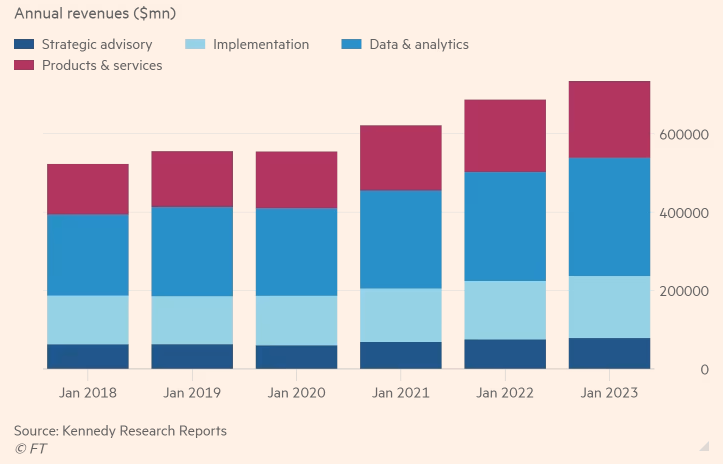
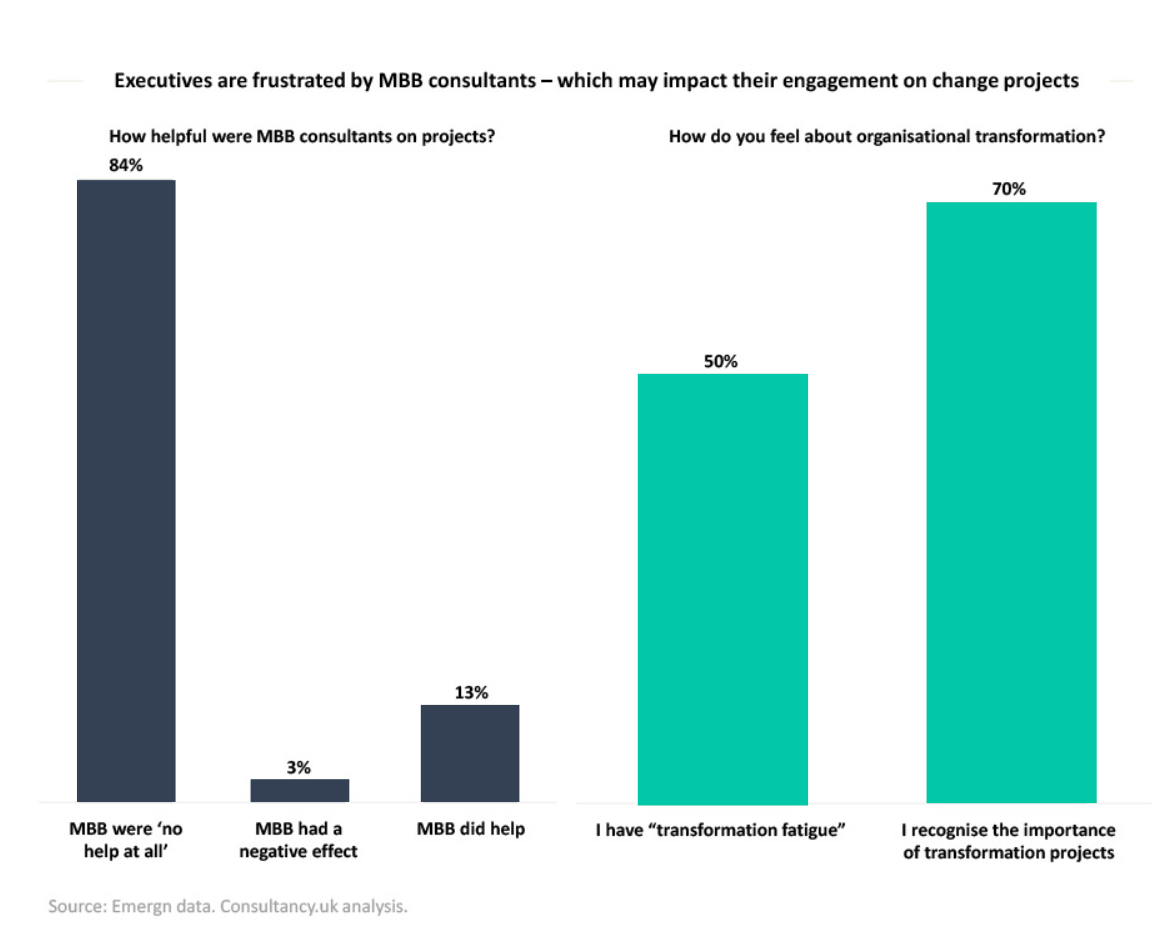
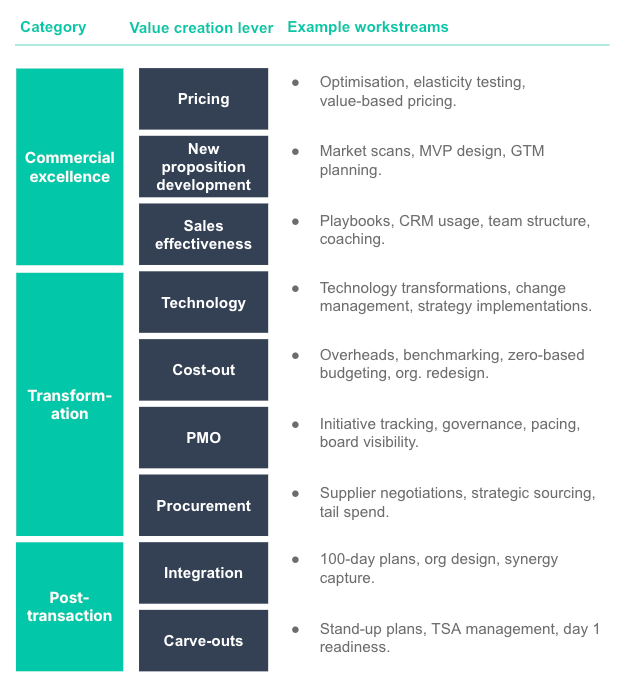

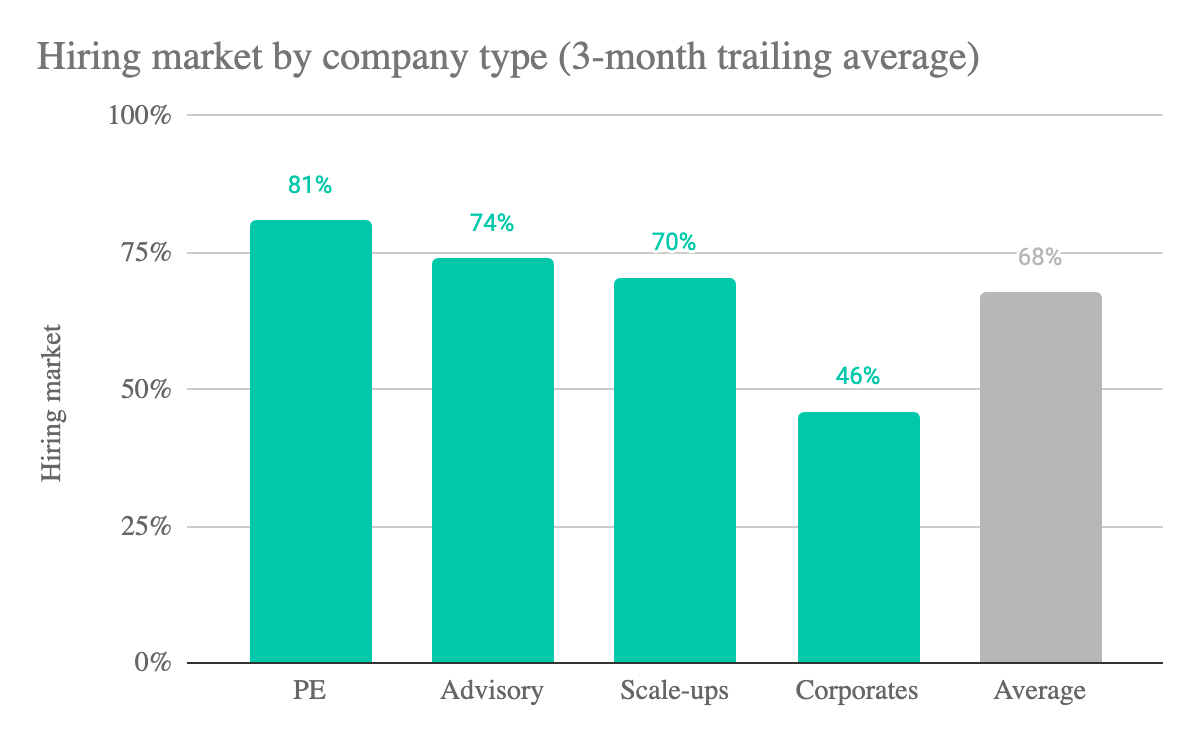
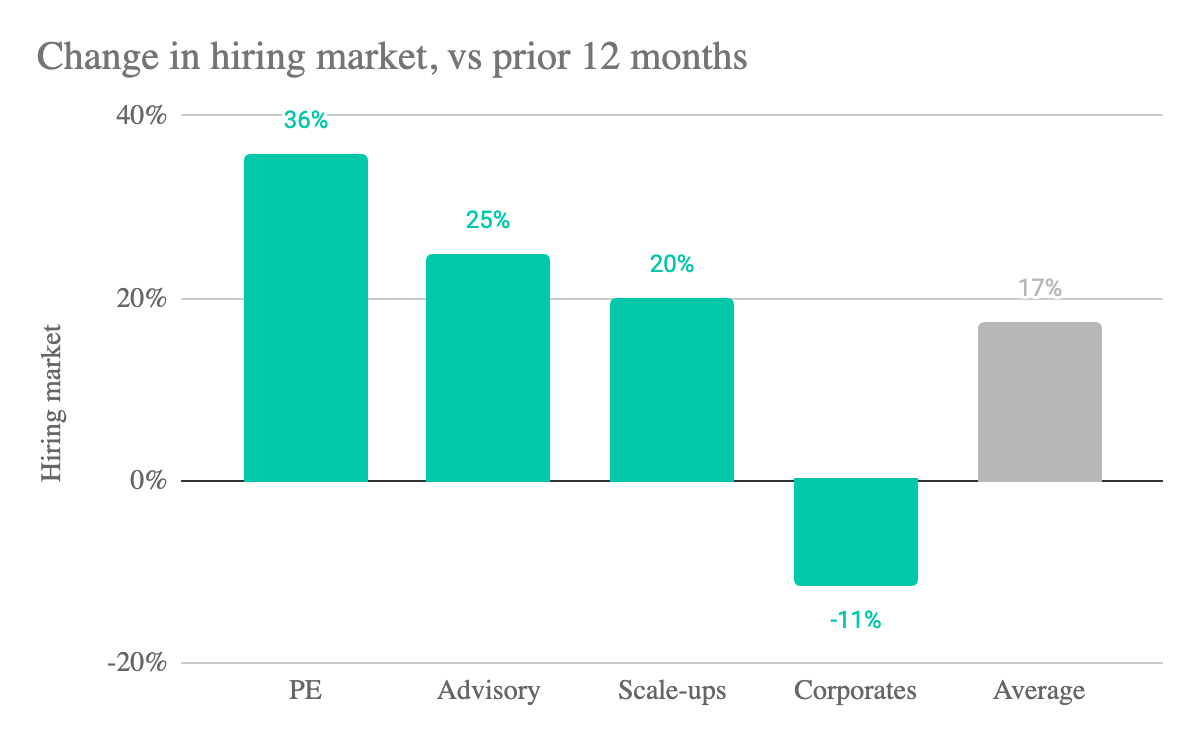

.jpg)

.jpg)


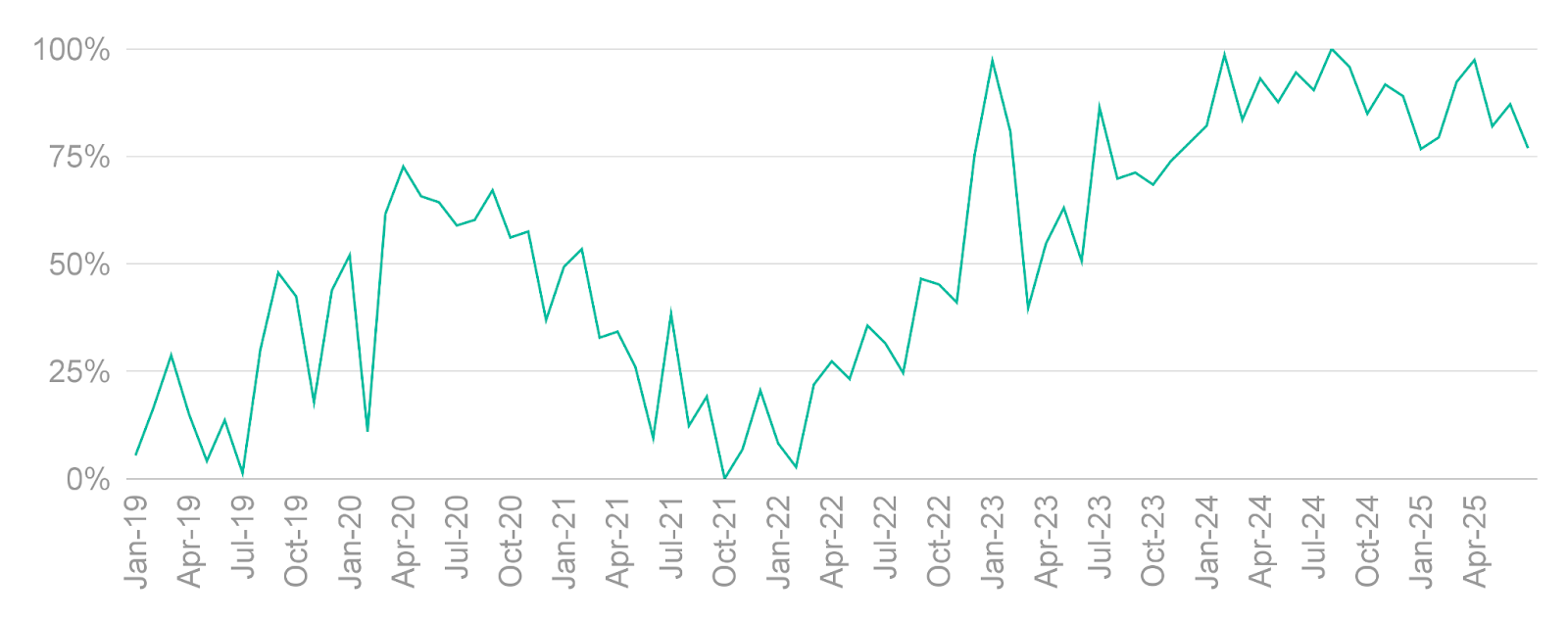
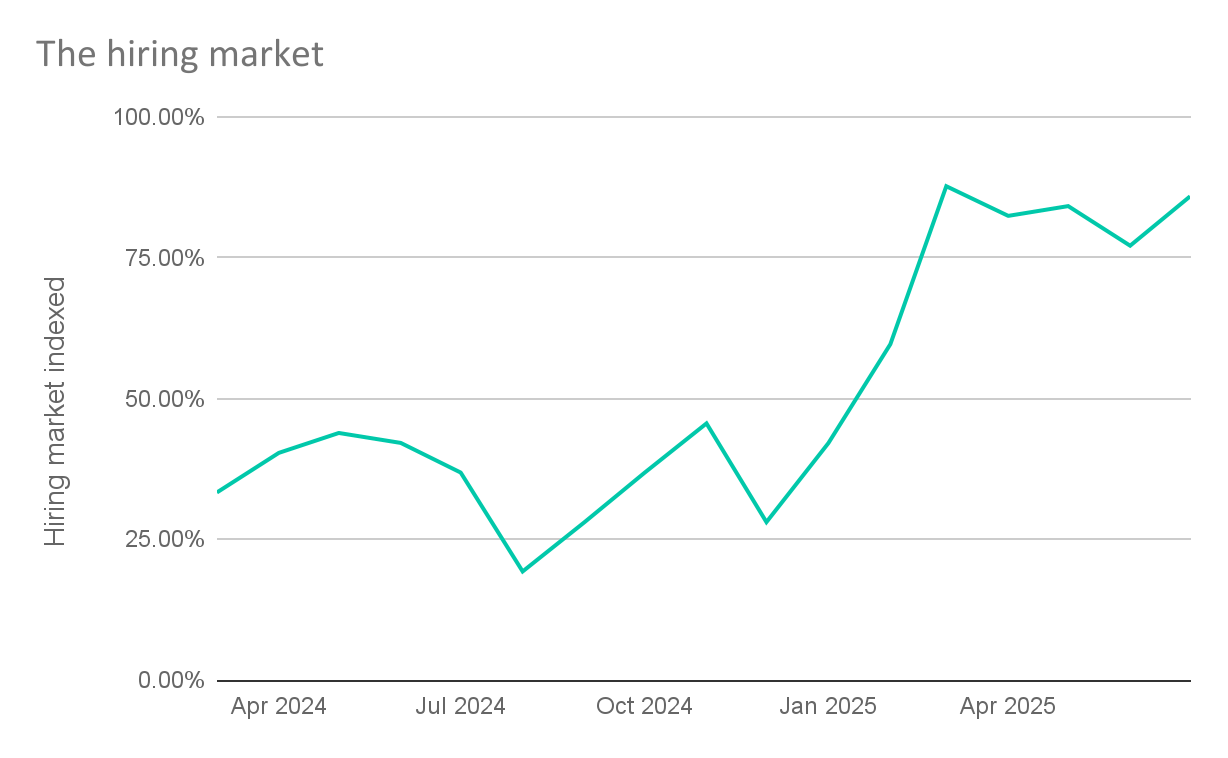



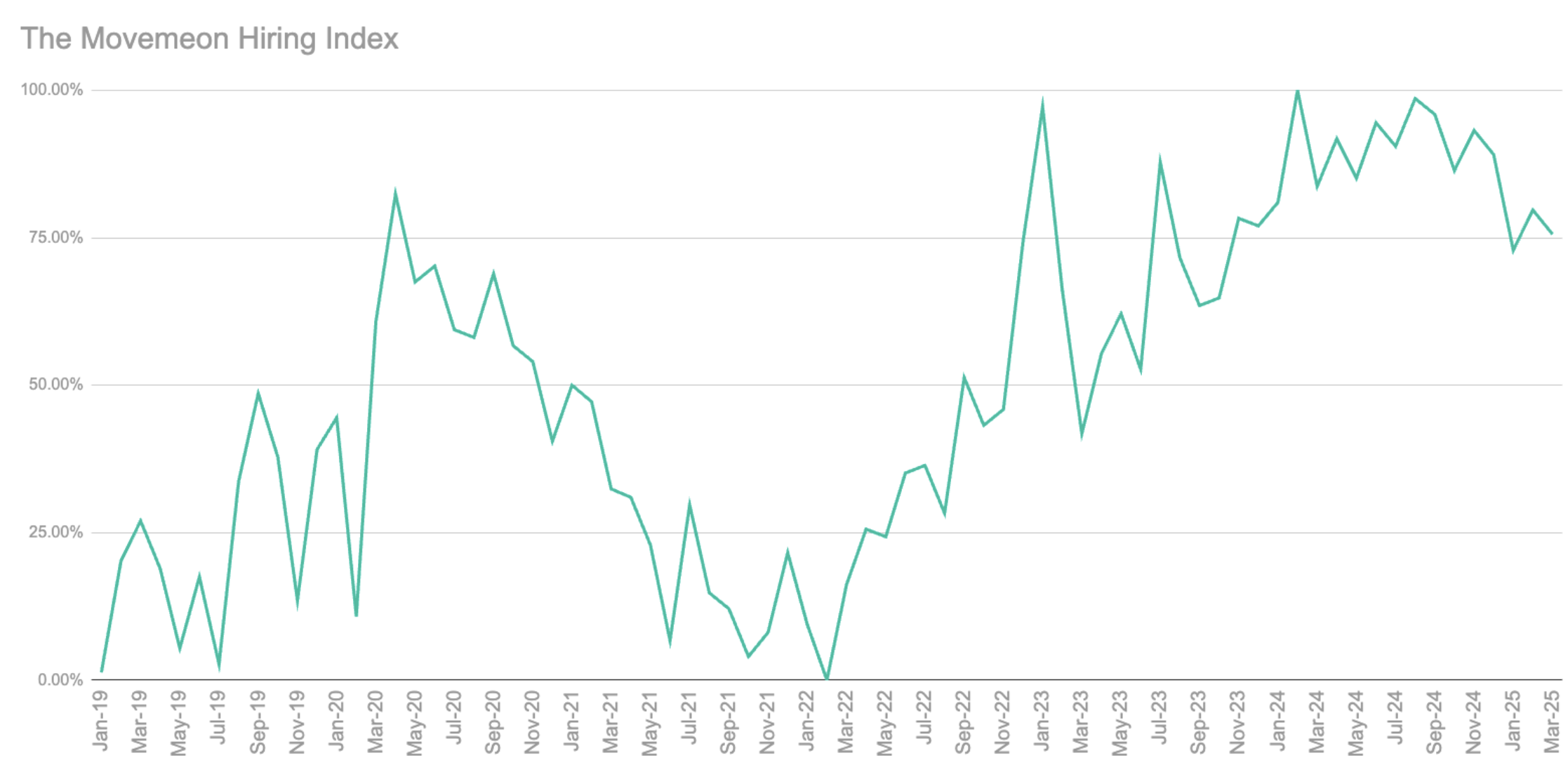


















.jpg)

